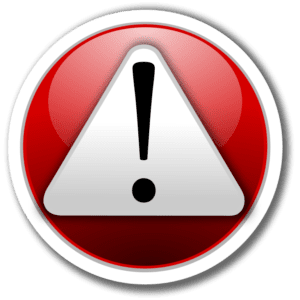Errors
Errors in pharmaceutical analysis refer to the discrepancies between the standard values and the true value. These errors can affect the accuracy and reliability of pharmaceutical analysis, and it’s crucial to identify and minimize them to ensure the quality and safety of pharmaceutical products. In this article we will see sources of errors, types of errors and methods of minimizing errors.
Sources and types of errors
Errors in pharmaceutical analysis refer to the discrepancies between the standard values and the true value. They can be broadly divided into two categories as follows.
Determinate (Systematic) Errors
These are errors that possess a definite value with a reasonable cause and these avoidable errors may be measured and accounted for rectification. The most important errors belonging to this particular class are discussed below.

- Personal Errors: They are exclusively caused due to ‘personal equation’ of an analyst and do not due to either on the prescribed procedure or methodology involved.
- Instrumental Errors: These are invariably caused by uncalibrated instruments, such as pH meters, due to faulty and UV-spectrophotometers, potentiometers etc.
- Reagent Errors: The errors that are solely introduced by virtue of the individual reagents, for instance: impurities inherently present in reagents; high temperature volatilization of platinum (Pt); unwanted introduction of ‘foreign substances’ caused by the action of reagents on either porcelain or glass apparatus.
- Constant Errors: They are observed to be rather independent of the magnitude of the measured amount; and turn out to be relatively less significant as the magnitude enhances.
- Proportional Errors: The absolute value of this kind of error changes with the size of the sample in such a fashion that the relative error remains constant.
- Errors due to Methodology: Both improper (incorrect) sampling and incompleteness of a reaction often lead to serious errors.
Indeterminate (Random) Errors
Indeterminate errors cannot be attributed to any specific well-defined cause. Most of the time, they arise from the minute variations that may occur in successive measurements made by the same analyst, under almost identical conditions, although with utmost care. As a result, they cannot be corrected or eliminated, therefore, determining the ‘ultimate limitation’ on the specific measurements.
These errors can affect the accuracy and reliability of pharmaceutical analysis, and it’s crucial to identify and minimize them to ensure the quality and safety of pharmaceutical products.
Methods of minimizing errors
There are several methods to minimize errors in pharmaceutical analysis. Some of the major methods are discussed below.
- Calibration of Apparatus: Instruments should be regularly calibrated to ensure their accuracy.
- Quality Control Measures: Implementing quality control measures, such as duplicate analysis, can help identify and correct errors before they affect the final results.
- Standard Operating Procedures (SOPs): Developing and following SOPs can help ensure consistency in the analytical process.
- Training: Ensuring that all personnel are well-trained and understand how to correctly perform analyses can help reduce personal errors.
- Checking for Mistakes: Regularly checking data for errors and correcting them can help improve the accuracy of results.
- Cleanliness and Preparation: Keeping samples and equipment clean and ready for use can help reduce errors introduced by contamination.
- Double-Checking: Repeating measurements can help catch mistakes and reduce random errors.
- Control Determination: An experiment using a standard substance under similar experimental conditions is designed to minimize errors.
- Blank Determination: Conducting a test in identical conditions without using the sample minimizes errors caused by impurities in the reagent.
By implementing these methods, it’s possible to significantly reduce both determinate (systematic) and indeterminate (random) errors, thereby improving the accuracy and reliability of pharmaceutical analysis.
Accuracy
Accuracy refers to how close a measurement is to the true or expected value. In pharmaceutical analysis, accurate results are important for ensuring the safety and effectiveness of drugs. Accuracy can be affected by various sources of error, such as human error, equipment error, or methodological error.
Precision
Precision refers to the consistency or reproducibility of a measurement. In pharmaceutical analysis, precise results are important for ensuring that the drug product is consistent and reliable. Precision can be affected by various sources of error, such as environmental factors or operator error.
Significant Figures
Significant figures refer to the number of digits in a measurement that are considered to be meaningful or relevant. In pharmaceutical analysis, significant figures are important for ensuring that the results are reported accurately and with appropriate precision. The number of significant figures in a measurement is determined by the precision of the measuring device or instrument used.
Summary
In conclusion, errors in pharmaceutical analysis, whether determinate (systematic) or indeterminate (random), can significantly impact the accuracy and precision of results, affecting the quality, safety, and efficacy of pharmaceutical products. Determinate errors, which include personal, instrumental, reagent, constant, proportional, and methodological errors, can be identified and corrected. Indeterminate errors, on the other hand, are unpredictable and unavoidable. Various methods, such as calibration of apparatus, control determination, blank determination, and following standard operating procedures, can be employed to minimize these errors. Understanding the concept of significant figures is also crucial in reporting results accurately. Therefore, rigorous quality control measures and adherence to standard protocols are essential in pharmaceutical analysis to ensure reliable and valid results.ccc
For more regular updates you can visit our social media accounts,
Instagram: Follow us
Facebook: Follow us
WhatsApp: Join us
Telegram: Join us

1 thought on “Errors in Pharmaceutical Analysis”